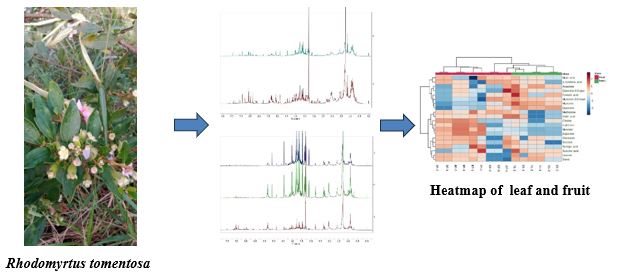JOURNAL 2853
Records of Natural Products
Year: 2023 Issue: 6 November-December
p.1052 - 1063
Viewed 2412 times.
GRAPHICAL ABSTRACT

ABSTRACT
Several studies have extensively documented the presence of metabolites with antibacterial, anticancer, antioxidant, and anti-inflammatory properties in extracts derived from Rhodomyrtus tomentosa fruits and leaves. Therefore, this study is aimed at evaluating the metabolite profile of R. tomentosa fruits and leaves at various maturity stages, as well as determining their phytomedicinal values. 1H NMR and chemometric analysis were used to conduct a metabolomics study to compare the metabolite profile and phytomedicinal values of different plant organs at varying ages. The leaves were classified into young and old categories, while the fruits were divided into three maturity stages, namely green, red, and purple. The wild-grown fruits and leaves of R. tomentosa (Ait.) Hassk were gathered in Banjarbaru, South Kalimantan Province, Indonesia. The multivariate analysis showed that choline, methionine, mannitol, and β-glucose compounds were three times higher in the fruits compared to the leaves. Meanwhile, the concentration of aspartate, myricetin, and quercetin compounds was three times higher in the leaves compared to the fruits. Secondary metabolites, including flavonoids, were identified in higher quantities in young leaves and green fruits compared to old leaves, as well as red and purple fruits.
KEYWORDS- Rhodomyrtus tomentosa
- flavonoid
- 1H-NMR
- multivariate statistical analysis